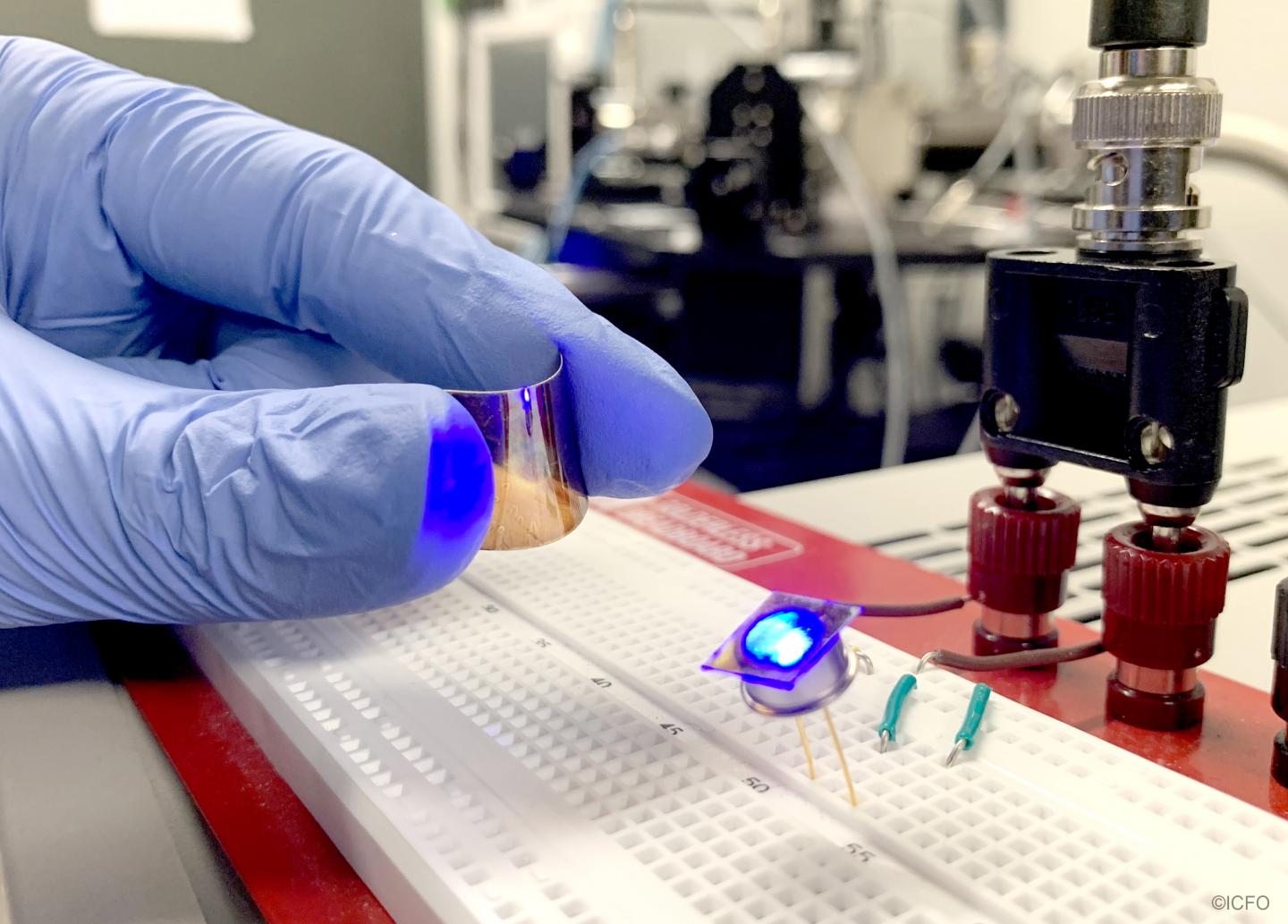Researchers make SWIR LED from Quantum dots

Multi-stack of CQDs offers low-cost solution processability, easy CMOS integration and a readily tuneable bandgap
Scientists from ICFO (The Institute of Photonic Sciences) in Spain, have developed a new class of broadband shortwave infrared solid state light emitter based on colloidal quantum dot (CQD) thin film technology.
The research by Santanu Pradhan and Mariona Dalmases led by Gerasimos Konstantatos is thought to represent the first monolithic electrically driven broadband Short Wave Infrared (SWIR) LED that does not need to rely on external light sources for excitation. The results of their study have been published in the journal Advanced Materials.
CQDs offer the advantages of low-cost solution processability, easy CMOS integration and a readily tuneable bandgap. By using these properties, the ICFO researchers designed and engineered a multi-stack of CQDs of different size, which showed to be capable of emitting light with a spectrum that depends on the size of the emitting QDs.
The sequence and thickness of the layers was optimised to maximise the photoconversion efficiency of this down-converting nanophosphor type of thin film. The stacks were built on top of a flexible plastic substrate which was then glued on top of a LED that emits in the visible range. This LED emits visible light that is then absorbed and converted by the CQDs to infrared light with a desired spectrum and, more importantly, with an outstanding photon conversion efficiency of 25 percent.
They showed that the shape of the emission spectrum can be tuned by choosing the appropriate populations of CQD sizes. For this particular case, the researchers developed a broadband light source covering an emission range between 1100 - 1700 nm with a FWHM of 400 nm.
Then, by exploiting the conductive nature of the CQD thin films, the researchers were able to take a step further in their experiment and also construct electrically driven active broadband LEDs with a FWHM in excess of 350 nm and quantum efficiency of 5 percent.
Current technologies based on III-V semiconductors are not CMOS compatible and require multiple InGaAs chips in the form of an array to deliver a broadband spectrum.
To demonstrate how suitable this technology could be for market applications based on spectroscopy techniques, the team of researchers searched for several real case examples that could be good candidates for such technology. They took their CQD light source setup and by putting it together with commercially available spectrometers, they were able to distinguish between different types of plastics, liquids and milks that have distinct spectral signatures in the SWIR.
The successful results open a new realm for the field of SWIR spectroscopy since they prove that this technology could definitely be used for applications that range from plastic sorting in recycling process, to health and safety or even food inspection, to name a few.


































